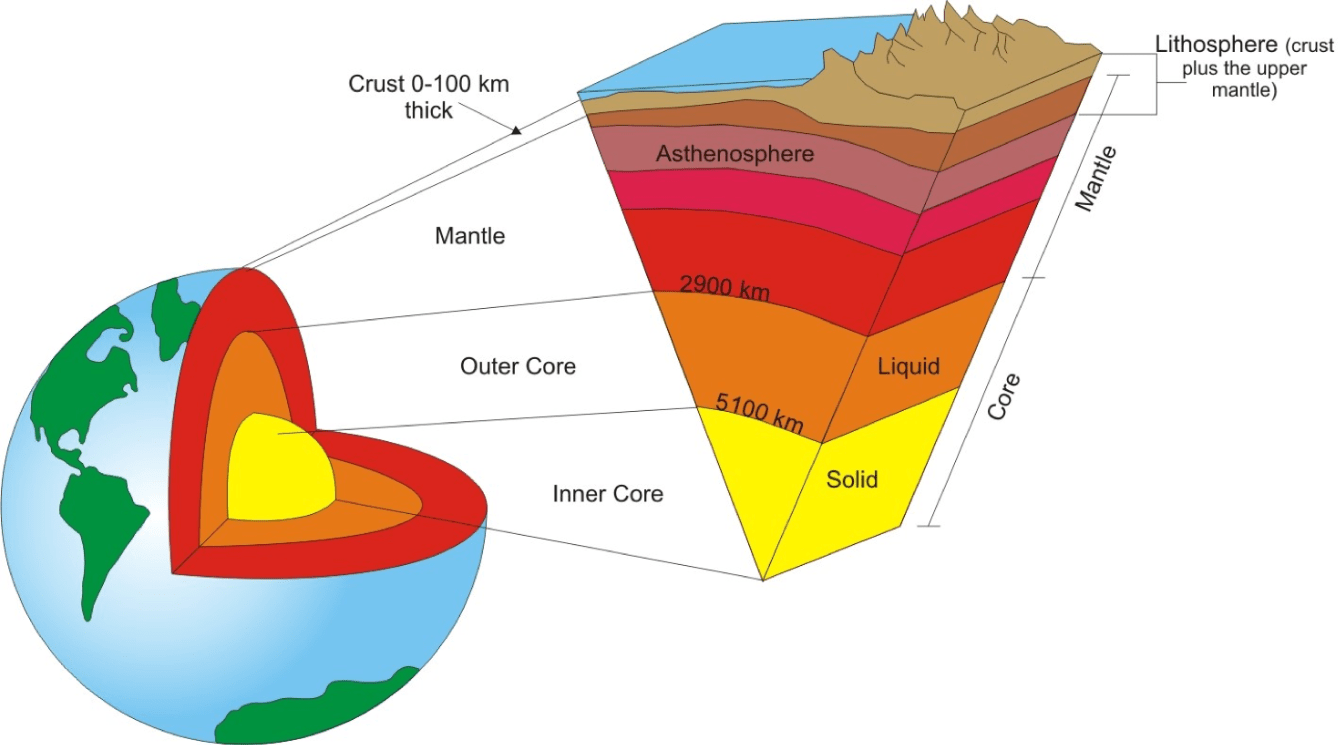What are the three most abundant components of Earth's atmosphere?
N2 (78%), O2 (21%), Ar (0.9%)
What is the unit of measurement for distance within our solar system and how is it defined?
The astronomical unit (AU) is defined by the average distance between Earth and the sun (1 AU).
What is the only erosional force on Mars today?
Wind
What are Saturn's rings made of?
Fragments of rock and ice.
Why do stars have different spectra?
The spectra of stars varies mostly due to differences in temperature.
According to astrobiologists, what is the definition of a biosignature?
Any trace of life that cannot be produced abiotically.
Why is ozone important for life on Earth?
It absorbs most of the UV radiation that Earth receives from the sun. UV radiation is damaging to biological molecules.
Is there water on Earth's moon?
No liquid or vapor, but there is some water ice in permanently shadowed craters.
Which two Mars rovers are currently functioning on the planet with many instruments specifically designed to look for biosignatures and signs of past habitability?
Curiosity and Perseverance
Why does Jupiter have such a strong magnetic field?
It's generated by the huge layer of liquid metallic hydrogen in the planet's interior.
Why is it hard to directly image an exoplanet?
What is a technosignature?
Any sign of technology, such as electromagnetic emissions, light and heat, evidence of industry, or massive structures.
How does the greenhouse effect work?
Which planet has the most extreme temperature changes and why?
Mercury has the most extreme temperature changes because the side facing the sun gets very hot given how close the planet is, but there's no atmosphere to retain or distribute the heat, so the side away from the sun gets very cold.
How are the current atmospheres of Mars and Earth different?
What potential energy sources could sustain life in Europa's subsurface ocean?
Chemical energy sources, such as from the water-rock interactions around hydrothermal vents (chemolithoautotrophy).
What are the three key considerations when remotely evaluating the potential habitability of an exoplanet?
1. Mass of the planet
2. Orbital distance and eccentricity
3. Type of star
Why is timing important in remote biosignature detection?
As life evolved on Earth, it changed the composition of our atmosphere to its current high levels of O2 and atmospheric disequilibrium with CH4, which could potentially be detected remotely as signs of life on the planet. When humans started sending radio messages, Earth became potentially detectable as a planet hosting technologically advanced life.
Describe the major layers of Earth's internal structure.

What do we mean when we say that Earth's moon is tidally locked?
Tidal locking means that the moon completes one rotation in the same amount of time it takes to complete one orbit, so it's always showing the same side to Earth.
Describe two pieces of evidence that Mars once had abundant liquid water on its surface.
- Runoff, outflow channels, and deltas from rivers and streams
- Geomorphology showing ancient lakebeds and possibly even seas
- Deposits of rocks and minerals formed by aqueous processes
- Features that show erosion by flowing water
What is the only other body in our solar system to currently have stable bodies of liquid on its surface, and what is the composition of that liquid?
Titan has rivers and lakes of methane and ethane.
Why might high mass stars not be conducive to the formation of life on planets in their systems?
High mass stars burn through their hydrogen supplies much faster than low mass stars (millions versus billions of years), so they probably don't last long enough for life to form.
Name one instrument on the Perseverance rover and what technique it uses to look for biosignatures.
- PIXL: uses fluorescence spectroscopy to look at mineralogy and chemistry at the micron scale
- SHERLOC: uses cameras and Raman spectroscopy to determine mineralogy and detect organic molecules
- SuperCam: uses spectrometers to identify chemistry and mineralogy
Why might plate tectonics be important for habitability?
On Earth, plate tectonics plays important roles in the long-term stability of Earth's climate and cycling of the elements.
Why is Venus sometimes called Earth's "evil twin"?
Venus is almost the same size as Earth and has a similar bulk composition, but its average surface temperature is about 460ºC, compared to 15ºC on Earth. This is due to the runaway greenhouse effect on Venus that created its very thick atmosphere, composed of mostly CO2.
Why is it significant that rocks on the surface of Mars record the remnants of a former magnetic field?
The fact that Mars once had a magnetic field supports the theory that it used to have a thicker atmosphere and thus warmer and wetter conditions.
What does the composition of the vapor plumes on Enceladus tell us about the potential habitability of its subsurface ocean?
When Cassini sampled a plume and analyzed the composition, it found water vapor, CO2, salts, and silica dust. This composition implies that hot water interacted with rock, for example at a hydrothermal vent. This would mean that there are all three elements necessary for life (as we know it): common chemical elements, liquid water, and an energy source.
What are the five different common ways that astronomers detect exoplanets and which two have been the most successful thus far?
1. Radial velocity
2. Transit
3. Direct imaging
4. Gravitational microlensing
5. Astrometry
Most exoplanets have been found by the transit method, next is radial velocity.
Is O2 in a planet's atmosphere a sure sign of life? What about about CH4?
O2 and CH4 can both be produced abiotically, so on their own, neither one is a definite biosignature, but if they were found in high concentrations together, it would show atmospheric disequilibrium, which is a stronger biosignature.